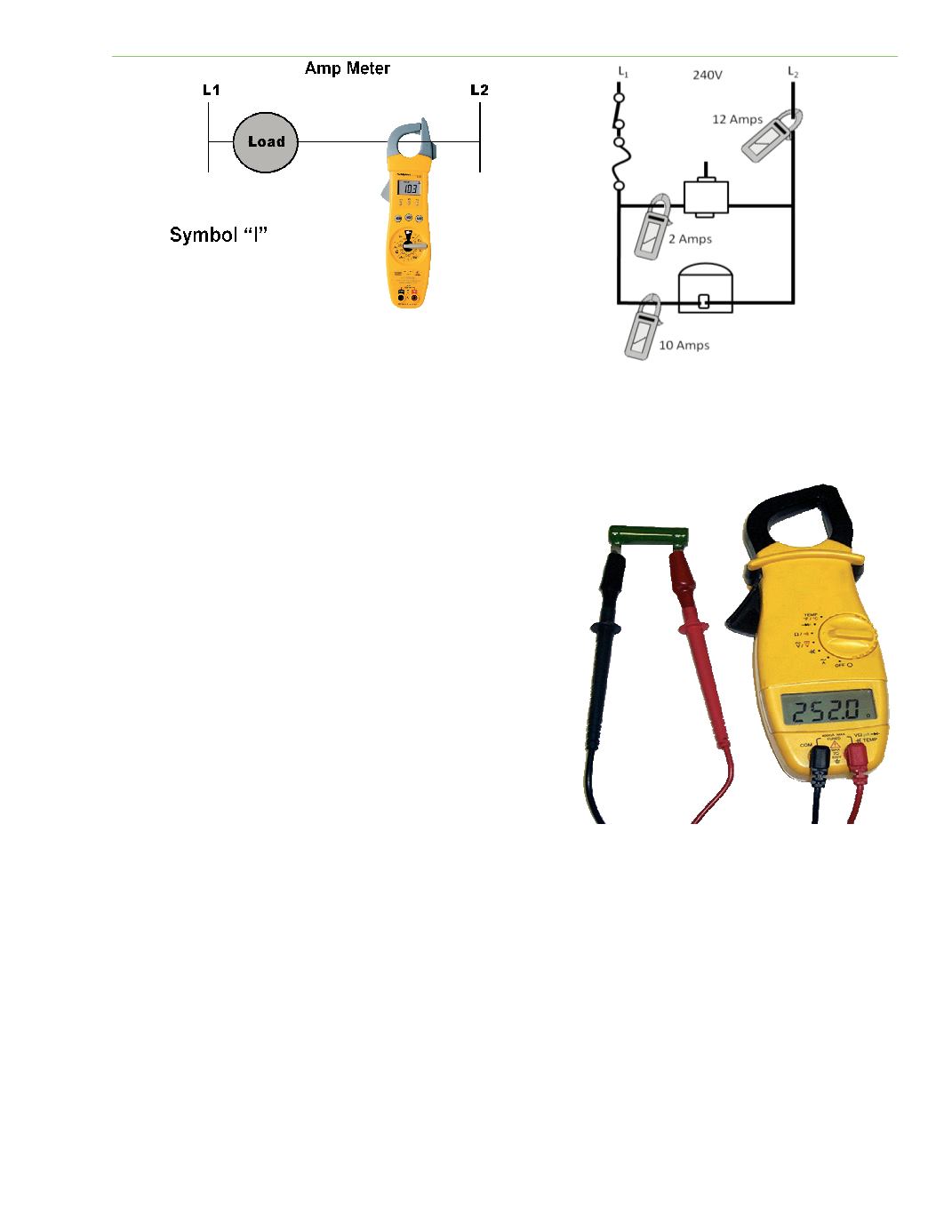

Electrical Theory & Applications for HVACR
Chapter 1: What Is Electricity?
Page 7
RESISTANCE
Resistance refers to anything offering opposiƟon to the
flow of electrons. It is the resistance that causes energy
conversion. Electron flow is energy in moƟon and must be
controlled. The resistance is one factor that controls the
amount of electron flow, and thus regulates the rate at
which the useful work is performed. A circuit without
resistance to control the electron flow is considered
shorted.
There are several types of resistance that will be discussed
later in this chapter. However, a basic understanding of
Ohm’s Law is necessary before that discussion.
OHM’S LAW
Ohm’s law, discovered by George S. Ohm, defines the exact
relaƟonship between voltage (E), amperage (I), and resistance (R). Ohm’s Law is used for
troubleshooƟng purposes and designing electrical devices and circuits. The capital leƩer “R” is oŌen
used to indicate resistance. Another symbol for resistance is the Greek leƩer Ω (omega).
Ohm’s Law is best remembered as a pie, as shown in Figure 1‐7. To use the pie chart, cover the item
to be determined and follow the instrucƟons as indicated by the horizontal or verƟcal lines. For
example, to discover E, you must mulƟply I by R. To discover I, divide R by E.
Fig 1‐4: The inducƟve ammeter reads intensity
of magneƟc field around the wire and converts
it to an amperage reading.
Fig 1‐5: Total amperes for a
circuit is the sum of the branch
circuits.
Fig. 1‐6










